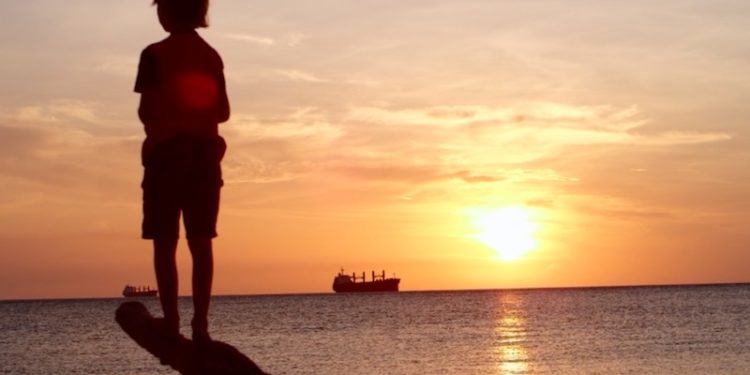Project SeSafe, funded by the FRDC, AMSA, and the commercial fishing industry, commenced this year in early March. The project is designed to raise awareness and improve safety performance in the Australian fishing and aquaculture industry, by aiming for zero deaths at sea, a significant reduction in workplace injuries, and 100% compliance with safety regulations.
Steve Eayrs, project principal investigator, is all too familiar with the dangers of working in the fishing industry. A commercial fisher in the 1980’s in the Northern Prawn Fishery and Tasmania’s orange roughy fishery, he has had several close calls.
‘I have been dragged overboard by fishing gear, fallen between boats tied together, and had quite a few hand and other injuries during my brief fishing career. In most instances these injuries could have been avoided, but I was careless and in hindsight, not well trained,’ he said.
‘Fishing now ranks as the most dangerous occupation in the country. By our estimations, it is 25% more dangerous than the mining industry, meaning it is far more dangerous working on a boat than working hundreds of metres underground.’
Steve said that while information on safety at sea is readily available, a challenge is breaking it down and presenting it in a useful and readily accessible format.
Project SeSafe has overcome this challenge by developing a Learning Management System (LMS), consisting of multiple, brief online training modules to deliver workplace health and safety training to fishers prior to going to sea.
‘In this way boat owners have a simple and effective way to induct skippers and crew in workplace health and safety at the beginning of a fishing season.’
Importantly the LMS also offers a solution to many of the traditional barriers to safety training for fishers including relevance, accessibility and cost.
‘With a plan to prepare around 30 modules, including risk assessment, electrical safety, personal protective equipment, man overboard, and fire at sea, boat owners can cherry pick any of the modules they deem applicable to their particular fishing operation. In addition, we are producing modules to address fishery-specific safety hazards, which boat owners can also select to provide a wide-ranging, relevant, and comprehensive training package.’
‘The idea is to keep modules short and sharp. Each module is around 4-minutes long followed by several brief questions to test comprehension and understanding of module material. Once the questions have been answered, the individual receives a performance score. That information is then sent to the boat owner – providing evidence that training has been completed. It also serves as a record to demonstrate a duty of care by the boat owner to the fisher.’
Steve said that modules are designed to be downloaded prior to going to sea, thus providing for the first time a way to train fishers in sea safety before boarding a boat. Alternatively, downloaded modules can be completed at sea, and then uploaded automatically when next in wifi range.
‘Module completion could become a condition of employment, before someone steps onto a boat, which might be particularly useful when employing new, inexperienced crew. This training also complements any at-sea training that is provided to crew as well as details contain in the boats’ Safety Management System,’ he commented.
‘In the future, I hope to be collaborating with boat owners, fishing companies, and industry bodies around the country. The aim is to raise project awareness across the entire fishing and aquaculture industry and inspire the use of LMS modules to improve safety performance.’
Further information about the SeSAFE project is from the website, which includes a video that asks the question, What if I don’t come home? – or by contacting Steve Eayrs at seayrs@sesafe.com.au.









